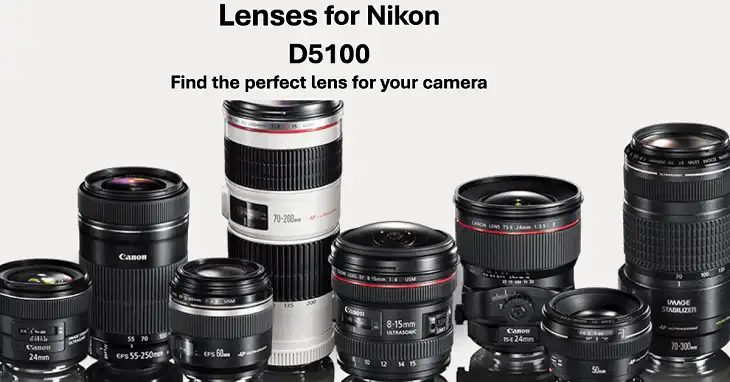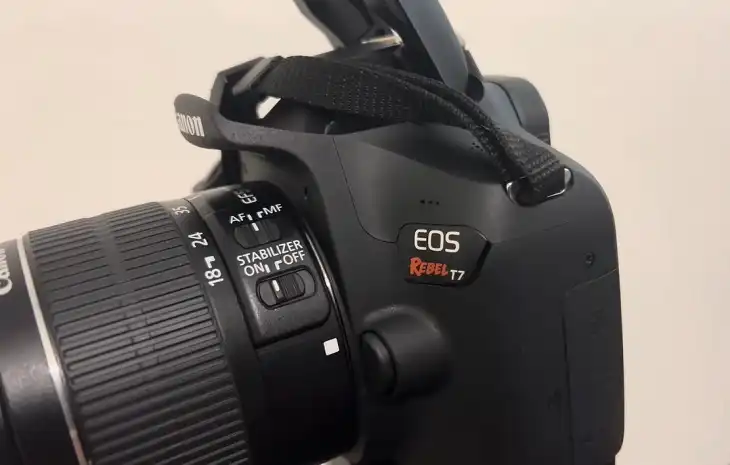Is A Fisheye Lens Concave Or Convex?

Fisheye lenses are a unique and fascinating type of optical equipment that have captivated photographers, scientists, and engineers alike.
These ultra-wide-angle lenses are designed with a distinctive convex front element that protrudes outwards, allowing them to capture an extremely wide field of view, typically 180 degrees or more.
This unique design gives fisheye lenses their characteristic distorted, curved appearance in images, mimicking the view of a fish’s eye.
First developed in the 1920s for meteorological studies, fisheye lenses have since found applications in various fields, from artistic photography to security systems.
In this article, we’ll dive deep into the world of fisheye lenses, exploring their characteristics, types, and applications, as well as comparing them to their wide-angle cousins.
Fisheye Lens: Convex or Concave?
A fisheye lens is typically a convex lens. Before diving into fisheye lenses, let’s clarify the difference between convex and concave lenses:
- Convex lens: Thicker at the center than at the edges, it converges light rays.
- Concave lens: Thinner at the center than at the edges, it diverges light rays.
What is a Fisheye Lens?
Fisheye lenses are a special category of ultra-wide-angle lenses that provide an extremely wide field of view.
They are designed to capture a panoramic or hemispherical image, often with significant visual distortion.
Convex Nature
To achieve this extreme wide-angle perspective, fisheye lenses employ a complex optical design, but the core element is usually a convex lens. This convex shape helps to gather a significantly wider field of view than a standard lens.
Distortion
While the underlying lens shape is convex, the unique characteristic of a fisheye lens is its ability to introduce extreme barrel distortion.
This means straight lines near the image edges appear curved outward, creating the distinctive fisheye effect.
Definition And History
The term “fisheye” was coined in 1906 by American physicist and inventor Robert W. Wood. He was inspired by how a fish might see the world from underwater.
However, it wasn’t until the 1920s that the first fisheye lenses were developed for use in meteorology to study cloud formations.
A typical fisheye lens has a focal length between 8mm to 16mm for full-frame cameras, much shorter than standard lenses.
This short focal length allows them to capture a field of view ranging from 100 to 180 degrees, and sometimes even beyond.
Types Of Fisheye Lenses
There are two main types of fisheye lenses, each producing a distinct visual effect:
Circular Fisheye
Circular fisheye lenses produce a circular image within a black frame. These lenses can capture a full 180-degree view in all directions, resulting in a complete hemispherical image. The image appears as a circle because the lens projects the entire 180-degree field onto the camera’s sensor.
Full-frame fisheye
Full-frame fisheye lenses, also known as diagonal fisheyes, produce an image that fills the entire rectangular frame of the sensor. They typically offer a 180-degree diagonal field of view, with the vertical and horizontal fields of view being less than 180 degrees.
This type of fisheye lens is more commonly used in photography as it doesn’t leave black corners in the image.
Characteristics of Fisheye Lenses

Fisheye lenses have several unique characteristics that set them apart from other types of lenses:
1. Focal Length
As mentioned earlier, fisheye lenses have very short focal lengths. Circular fisheye lenses typically have focal lengths of 8mm to 10mm, while full-frame fisheye lenses are usually around 15mm to 16mm for full-frame cameras.
2. Angle Of View
One of the most distinctive features of fisheye lenses is their extremely wide angle of view. They can capture a 180-degree field of view at their widest point, allowing them to take in an entire hemisphere in a single shot.
3. Image Distortion
Fisheye lenses produce a characteristic type of distortion called barrel distortion. In this type of distortion, the center of the frame appears to bulge outwards, and straight lines are curved, especially towards the edges of the frame. This distortion gives fisheye images their distinctive “bulged” or spherical look.
4. Depth Of Field
Due to their extremely wide angle and short focal length, fisheye lenses tend to have a very large depth of field. This means that a large portion of the image, from foreground to background, appears in focus.
Fisheye Lens Projection
The way fisheye lenses project an image onto the camera sensor is different from rectilinear lenses. There are two main types of fisheye projections:
1. Equidistant Fisheye Projection
In this projection, the distance from the center of the image to any point is directly proportional to the angle from the optical axis to that point in the real world. The mathematical formula for this projection is:
R = f * θ
Where R is the radial distance on the image, f is the focal length, and θ is the angle from the optical axis in radians.
2. Equal Area Fisheye Projection
This projection maintains equal areas on the image plane, regardless of their position. The formula for this projection is:
R = f * √(2 * (1 – cos(θ)))
This projection is less common but can be useful in scientific applications where preserving relative areas is important.
Comparison with Wide-Angle Lenses
While both fisheye and wide-angle lenses offer a broader field of view than standard lenses, there are significant differences between them:
Key Differences
- Field of view: Wide-angle lenses typically have a field of view between 60 and 84 degrees, while fisheye lenses can reach up to 180 degrees or more.
- Distortion: Wide-angle lenses aim to minimize distortion and keep straight lines straight, while fisheye lenses embrace and exaggerate distortion for artistic effect.
- Image shape: Wide-angle lenses produce rectangular images that fill the entire frame, while circular fisheye lenses produce circular images within the frame.
When To Use Each Type
Wide-angle lenses are preferred when you want to capture a broad scene without noticeable distortion, such as in landscape or architectural photography.
Fisheye lenses, on the other hand, are used when you want to create a dramatic, distorted effect or when you need to capture an extremely wide field of view in a single shot.
Applications of Fisheye Lenses
Fisheye lenses have found applications in various fields beyond just creative photography:
Photography And Videography
- Extreme sports: Fisheye lenses are popular in action sports photography and videography, where they can capture a wide view of the surroundings and emphasize the dynamism of the action.
- Landscape and architectural photography: While not as common as wide-angle lenses in these fields, fisheye lenses can create unique and dramatic perspectives of landscapes and buildings.
- Underwater photography: The distortion of fisheye lenses works well underwater, where there are naturally no straight lines.
Scientific And Industrial Uses
- Meteorology: Fisheye lenses are still used in their original application of studying cloud formations and capturing entire skyscapes.
- Astronomy: Astronomers use fisheye lenses to capture large portions of the night sky and to study light pollution.
- Security and surveillance: The wide field of view makes fisheye lenses ideal for security cameras, allowing a single camera to monitor a large area.
Everyday Applications
- Peepholes: The door viewers in many homes use a fisheye lens to provide a wide view of the area outside the door.
- Automotive: Some cars use fisheye lenses in their parking cameras to provide a broad view of the area behind the vehicle.
- Virtual reality: Fisheye lenses are used in creating immersive 360-degree images and videos for virtual reality applications.
Advantages and Disadvantages of Fisheye Lenses
Like any specialized tool, fisheye lenses have their pros and cons:
Advantages:
- Extremely wide field of view
- Unique, eye-catching distortion effect
- Ability to capture entire scenes in a single shot
- Deep depth of field
- Compact size compared to other ultra-wide lenses
Disadvantages:
- Significant distortion may not be suitable for all subjects
- Limited use in conventional photography
- Can be challenging to compose shots effectively
- May require specialized software for de-fishing (removing distortion) if a more natural look is desired
Conclusion
Fisheye lenses, with their distinctive convex front element and ability to capture extremely wide angles of view, occupy a unique place in the world of optics.
While their pronounced distortion may not suit every photographic situation, they offer unparalleled creative possibilities and practical applications in various fields.
Whether you’re an artist looking to create striking visual effects, a scientist studying the sky, or an engineer designing security systems, understanding the characteristics and capabilities of fisheye lenses can open up new perspectives – quite literally.
As with any specialized tool, the key to using fisheye lenses effectively lies in understanding their strengths and limitations, and applying them creatively to achieve your desired results.
Frequently Asked Questions
1. What Type of Lens is a Fisheye Lens?
A fisheye lens is an ultra wide-angle lens designed to capture extremely wide images, often with a field of view approaching or even exceeding 180 degrees. This type of lens is commonly used in photography to create dramatic, exaggerated perspectives.
2. What is the Field of View of a Fisheye Lens?
The field of view of a fisheye lens typically ranges from 100 to 180 degrees, depending on the specific lens. This expansive field of view allows the lens to capture a much larger scene than a standard wide-angle lens, making it popular for landscape photography, astrophotography, and creative, artistic shots.
3. What Perspective is a Fisheye Lens?
A fisheye lens provides a unique perspective, capturing extremely wide angles, often up to 180 degrees. This perspective causes the image to be highly distorted, with straight lines curving outward from the center, giving it a distinctive and often surreal look.
4. Are Fisheye Lenses Convex?
Yes, fisheye lenses are convex, meaning the glass is curved outward. This convex shape is what enables the lens to capture such a wide field of view, but it also results in the characteristic convex (non-rectilinear) distortion seen in fisheye images.
5. What is the Fisheye Lens Effect Called?
The distinctive effect produced by a fisheye lens is known as “barrel distortion.” This effect causes straight lines to curve outward, especially near the edges of the frame, giving the image a bubble-like or spherical appearance.
Barrel distortion is a hallmark of fisheye photography and is often used intentionally for its creative, artistic qualities.






